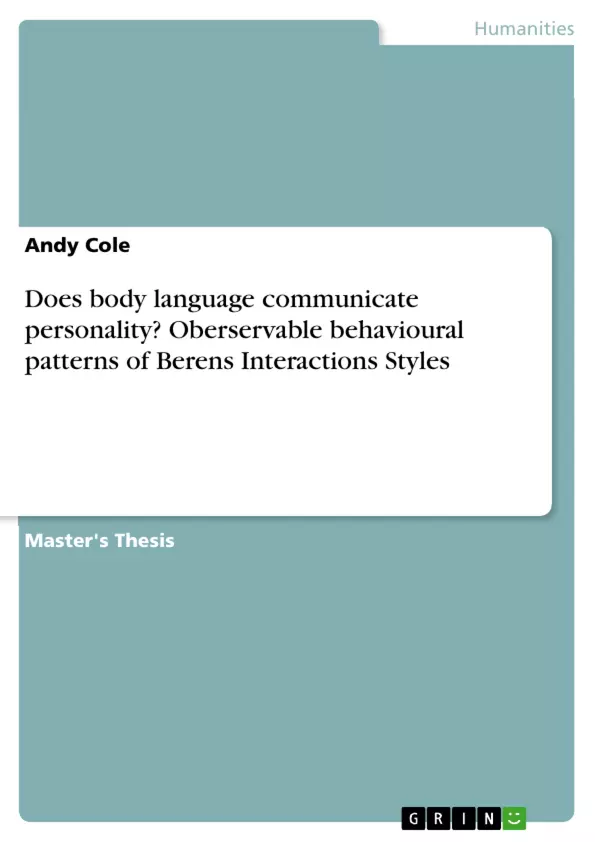An experiment was conducted to assess whether the claims made about body language in Berens theory of Interaction Styles could be demonstrated in practice. The proposed differences in characteristics associated with appearance and talents were performed by an actor in 4 separate short film presentations. Participants were asked to watch each film and select words from the theory to describe the personality of the actors they saw.
Positive evidence was found for the hypothesis that body language communicates personality characteristics and that these descriptions follow a recognisable pattern in line with Berens Interactions Styles. Some expected patterns suggested by the model were indicated with strong significance for 10 words from the theory indicating the discrete characteristics were present.
Recommendations are made for applied research across a greater reach of the body language model proposed by Berens’ and for bespoke training materials to be created to help practitioners in the field.
Inhaltsverzeichnis (Table of Contents)
- Literature Review
- Theories of Personality
- Eysenck's PEN Model
- McCrae's Temperament Theory
- Berens Interaction Styles
- Non-Verbal Communication
- Thin Slicing
- Confirmation Bias
- Primacy Effect
- Correspondence Bias
- Methodology
- Participants
- Materials
- Procedure
- Results
- Data Analysis
- Key Findings
- Discussion
- Limitations
- Future Research
- Implications for Practice
Zielsetzung und Themenschwerpunkte (Objectives and Key Themes)
This dissertation investigates the link between body language and personality, specifically examining the claims made about observable behavioural patterns in Berens Interaction Styles. The research aims to assess whether these claims can be demonstrated in a practical setting.
- The relationship between body language and personality.
- The validity of Berens Interaction Styles theory in predicting observable behavioural patterns.
- The influence of non-verbal communication on social perception.
- The role of "thin slicing" in forming impressions about others.
- The impact of confirmation bias and the primacy effect on non-verbal communication interpretation.
Zusammenfassung der Kapitel (Chapter Summaries)
The literature review explores existing research on personality theory and non-verbal communication. It examines various models of personality, including Eysenck's PEN model, McCrae's Temperament Theory, and Berens Interaction Styles. The chapter also delves into the concept of "thin slicing" and the potential biases that can influence our interpretation of non-verbal cues.
The methodology chapter outlines the research design, including the participants, materials, and procedures used in the study. This section explains how an experiment was conducted to assess the validity of Berens Interaction Styles theory.
The results chapter presents the findings of the experiment, including data analysis and key observations. This section focuses on the evidence gathered to support or refute the hypothesis that body language communicates personality characteristics.
The discussion chapter explores the implications of the research findings, considering limitations, future research directions, and practical applications. This section discusses the potential impact of the study on understanding social interaction and improving communication skills.
Schlüsselwörter (Keywords)
Body language, personality, Berens Interaction Styles, non-verbal communication, thin slicing, confirmation bias, primacy effect, social perception, communication skills, research methodology, experimental design.
- Quote paper
- Andy Cole (Author), 2016, Does body language communicate personality? Oberservable behavioural patterns of Berens Interactions Styles, Munich, GRIN Verlag, https://www.grin.com/document/342939



